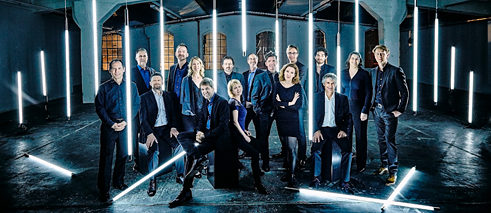New Music
On the Rise – New Music at the Universities

It is a challenge. New Music has had a hard time in the daily cultural life, even if scholars and critics have long canonized it. Universities in Germany are therefore very active in providing students and public with an understanding of this music.
New Music is multifarious and uncomfortable; it explores border areas, provokes and surprises. Sounds exciting; yet contemporary music has an image problem: it is considered difficult to communicate. “Communication” therefore became the key concept of the scene, not least at German music conservatories, many of which maintain their own institutes for New Music. None can do without the corresponding offers – because of concern for the often-invoked “audience of tomorrow” and because here third-party funding beckons, without which no state institution can get by today. This of course says nothing about the nature, scope and quality of the programmes, which are as diverse as is “cultural education” itself.
The term combines two large and complex concepts and means, in the case of New Music, reducing inhibition thresholds, representing diversity and recruiting newcomers. The resultant spectrum of initiatives ranges from teacher training, maintenance of university orchestras and concert series to cooperation with external cultural institutions and the training of music educators in newly designed programmes.
As polyphonic as the scene itself
In 2017 the University of Music and Performing Arts (HfMDK) in Frankfurt presented its Night of New Music under the motto Action – Reaction and so put a key watchword on its successful communication: the goal must be to create spaces for discussion to keep discourse alive. To this principle the University of Music, Theatre and Media (HMTM) in Hanover also pays tribute in its communication programme bearing the motto Incontri (Encounters). Munich, for its part, relies above all on promotion of excellence: since 2012 the Academy for New Music has been organizing master classes with internationally renowned performers such as the Arditti Quartet and prominent composers such as Wolfgang Rihm, which have developed an appeal beyond the academic framework.
Rihm students at the University of Karlsruhe benefit from the rule that examination concerts are performed publicly by the University Ensemble for New Music or the ComputerStudio at the Institute for New Music and Media (InMM) and cooperation with external organizers is cultivated. In general, university orchestras, concert series and external partners seem to be a tried and tested recipe for German institutions of higher education in their efforts to communicate. Cologne maintains the Ensemble 20/21 and cultivates close contact to the Deutschlandfunk, the ensemble Musik-Fabrik and the Witten Festival for New Chamber Music. Stuttgart, on the other hand, speaks of a communication “network”: by and for students and staff, but also in contact with institutions such as the Donaueschingen Music Festival and the Broadcasting station Südwest Rundfunk. “Campus Present” also brought with it a transdisciplinary platform with two new professorships for contemporary aesthetics and performance.
In Berlin “Klangzeitort” likewise cultivates supra-institutional cooperation: the joint Institute for New Music of the University of the Arts and the Hanns Eisler Music Academy sees itself as a laboratory for musical composition and the reflective treatment of contemporary music. The German capital has also taken up the cause of “the inter and transdisciplinary connection of music”, “in the context both of the approaches of the humanities and the natural sciences and of current social and political issues”.
New Music at Klangzeitort: for example David Moliner
Concerts, cooperation, orchestras
This aspiration may be regarded as fundamental for the communication of New Music in post-factual times, in which art can no longer be l'art pour l'art. In fact, the core concerns of New Music and cultural education touch one another in that they each stand for ambivalence, contingency, many truths and the open encounter of the other. In this connection should be mentioned the event series Global Ear of the Dresden University of Music, which is devoted to intercultural question of sound.
Many universities have also paid attention to the progress of the media. This includes not only electronic studios but also the discussion in “behaviour, perception, communication, design and the aesthetics of music in the digital age”, as this is reflected on at the State Centre for Music-Design-Performance at the Trossinger University of Music. The Institute for Music and Media in Düsseldorf also devotes itself to such questions, while in Mainz “sound art” is seen “as an artistic interaction of art and music”. In Weimar, the city of the classics, an Institute for Contemporary Music was established in 2015 that thinks jointly about jazz and avant-garde music, while others locate the music of the future in pop culture, thus paying tribute post-modern diversity.
So there is not only one form of the communication of New Music at Germany universities. We can see them rather as lively hubs of cultural traffic. The way between mediating institution and respective target group is not a one-way street but rather a crossroads with multiple overlaps, because we know: contemporary music can maintain its claim to relevance only if it is practiced and communicated as polyphonically as our time is complex.